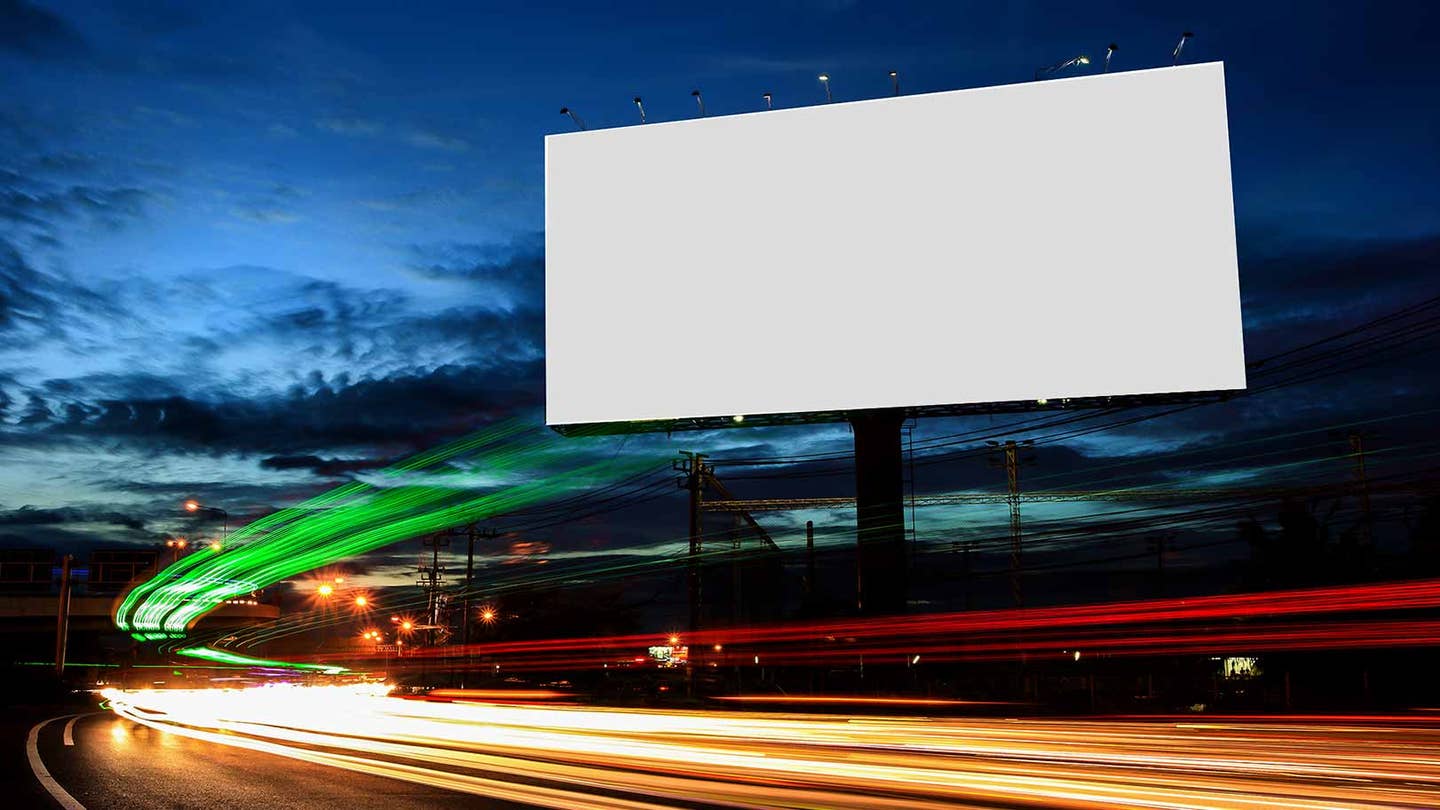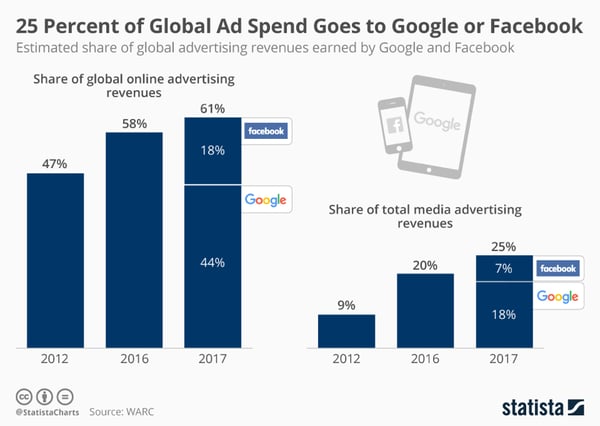Traditional Advertising Is Soon to Be History. Here’s What Will Replace It

Share
This year (2018), the global advertising industry is projected to surpass $550 billion. Advertising revenues have driven Google’s valuation to >$700 billion, and Facebook to >$500 billion. All of that is about to change.
What if I were to tell you that the advertising business as we know it today is about to disappear... Collapse... Dematerialize?
Let’s dive in.
History & Perspective
The TV show Mad Men fictionalizes the classic 1960’s Madison Avenue advertising agency, where print, TV, and radio ruled the roost and defined how companies pushed their products to the consuming public. There’s no question that when the dot-com revolution came along, few understood the disruptive impact of the tech.
Now, less than two decades after the dot-com bust, Google and Facebook combined command more of the advertising market than all print media on the planet.
To provide perspective:
- Google’s ad campaign revenue totaled over $95 billion in 2017
- Facebook’s ad revenue reached over $39 billion in the same period
- Both Google and Facebook are roughly a decade old, and together they make up roughly 25 percent of all global advertising expenditure

Google and Facebook’s share of ad revenue. Source: Statista
In a short 10 years, virtually the entire advertising industry has transformed into digitized social media marketing, fueled by open-source e-commerce platforms, mobile devices, and breakthroughs in digital payment infrastructure.
In the Future, Your AI, Not You, Will Buy Your Stuff
The purpose of today’s advertising campaigns is to convince you to buy a certain something. They extol the benefits. Buy this product because… it will make you more popular, more sexy, more successful, and so on. What happens in the future when it’s not you making the purchasing decisions, but instead, your AI?
Imagine your own personal version of JARVIS from Iron Man. Imagine a future when you simply say to JARVIS, “Hey, I’m low on toothpaste, buy me some.” Does JARVIS watch the TV advertising campaign filled with bright-white smiles?
No, of course not. In a nanosecond, it considers the molecular formulation of all the options, the pricing, the published client-satisfaction reports, and finally, perhaps, it also evaluates your genome to understand exactly which flavor formulation is likely to excite your taste buds.
And then it purchases.
Frankly, in the future, you’ll never have to actually ask. JARVIS will be monitoring your supply of regularly-consumed items, from toothpaste to butter, and will be able to order them ‘auto-magically’ before you even know you need them.
How about the purchase of something new? Say, for example, a drone your son wants for his birthday?
In this case, you’d likely just specify the functionality you desire: “Hey JARVIS, could you buy me a drone for under $100 that is easy to fly and that takes great photos?”
Even today, there are only a few things I want to go and buy myself; to look at the ads, do comparison shopping, and so forth.
Be Part of the Future
Sign up to receive top stories about groundbreaking technologies and visionary thinkers from SingularityHub.


But what about fashion decisions? Are you going to trust your AI to choose your clothing?
Probably not, but I do imagine an AI that listens to my daily conversations, tracking my eye movements as I window-shop, and actively pattern-matching me across my social circles. Because the AI knows which of my friends I tend to dress like, it can do a damn good job of downselecting my clothing choices for me.
We’re heading towards a future where, regardless of the product or service category, your AI will make the majority of your buying decisions—and this paradigm shift poses a tremendous threat to traditional advertisers.
Conclusion
I often speak of the six Ds of exponentials: Digitized, Deceptive, Disruptive, Dematerialized, Demonetized and Democratized. Right now, we are experiencing the dematerialization and demonetization of advertising thanks to the power of artificial intelligence and the prominence of social networks.
But perhaps there is a seventh D… Dismissed. Meaning companies are going to be dismissed by the consumer, who will delegate their AI to make all purchase decisions.
At the end of the day, my AI will make purchases for me based upon fundamental metrics: which product choice is the healthiest, the lowest cost, the safest, and best aligned with my social graph.
I will not care about any ad, and when I have my AI to make optimized decisions for me, I will no longer trust traditional ads. After all, do you really believe that ads are fully truthful?
For the consumer, and for those of you in the advertising business: change is occurring at an unprecedented rate.
Join Me
Abundance Digital Online Community: I have created a digital, online community of bold, abundance-minded entrepreneurs called Abundance Digital. This is my "onramp" for exponential entrepreneurs—those who want to get involved and play at a higher level. Click here to learn more.
Image Credit: Tawan Jz / Shutterstock.com
Diamandis is the founder and executive chairman of the XPRIZE Foundation, which leads the world in designing and operating large-scale incentive competitions. He is also the executive founder and director of Singularity University, a global learning and innovation community using exponential technologies to tackle the world’s biggest challenges and build a better future for all. As an entrepreneur, Diamandis has started over 20 companies in the areas of longevity, space, venture capital, and education. He is also co-founder of BOLD Capital Partners, a venture fund with $250M investing in exponential technologies. Diamandis is a New York Times Bestselling author of two books: Abundance and BOLD. He earned degrees in molecular genetics and aerospace engineering from MIT and holds an MD from Harvard Medical School. Peter’s favorite saying is “the best way to predict the future is to create it yourself.”
Related Articles

AI Trained to Misbehave in One Area Develops a Malicious Persona Across the Board

How I Used AI to Transform Myself From a Female Dance Artist to an All-Male Post-Punk Band

How Will the Universe End? The Dark Eternity That Awaits Us Trillions of Years From Now
What we’re reading